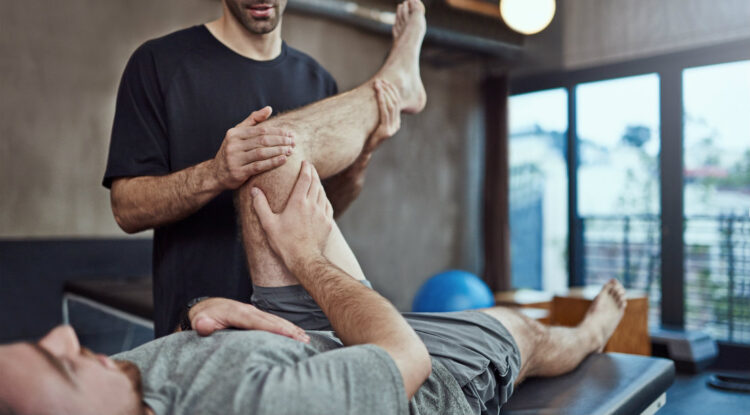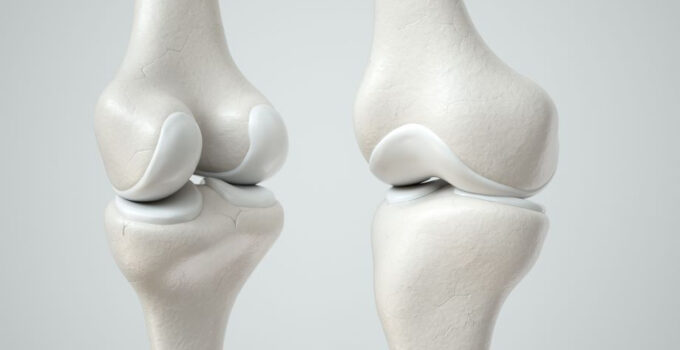Cartilage plays an important role in the musculoskeletal system, protecting bones and joints. Unfortunately, cartilage damage is challenging to heal due to its low vascularization – meaning there is a lack of blood vessels in the tissue – which restrict the healing process. Furthermore, cartilage has slow healing properties due to its lack of nerve endings, making tissue damage often remain unnoticed for longer than other soft tissue injuries.
Cartilage’s lack of blood vessels, nerve endings, and mineralization makes healing challenging. This, coupled with its slow regenerative properties, presents a significant obstacle for those who suffer from injury to the area due to surgery or sports-related trauma. Poor blood vessel growth is one of the major drivers in cartilage’s poor ability to heal and slower response time. Injured cartilage can create an influx of the immune system, causing inflammation, which unfortunately leads to an increase in blood flow and potentially damage or destruction of the collagen-rich welt atop it.
Other reasons why cartilage isn’t as easily healed as other types of soft tissue include its lack of cell-to-cell communication between cells. Cartilage is made of collagen, which is a poor conductor of the growth process compared to other soft tissue types. Collagen is also poorly vascularized, which leads to poorly regenerative tissue and poor healing abilities.
Cartilage is an integral part of many bodily structures; however, several contributing factors can hinder its healing process. Cartilage has no nerve endings and thus cannot communicate injury to the brain, which can lead to delayed diagnosis. Blood vessel growth is also very limited in cartilage, making regeneration difficult. As a result, this could lead to serious health conditions if addressed slowly and correctly.

Source: healthcare-in-europe.com
Slow healing times are common in cartilage injuries, but there are ways that you can begin the healing process and decrease your recovery time. Having a fast and effective recovery is one of the most important factors in staying healthy. The goal should be to stay active rather than inactive, so try to keep your joints moving even after an injury. Stretching the joint and working on mobility can help you avoid further injury.
Some Supplements Can Help Speed up The Healing Process:
- Glucosamine – This natural supplement has long been used as an alternative treatment for cartilage injuries. It is a key component of cartilage and helps promote healing by promoting regeneration. In addition to providing pain relief, it has been proven to work in adults and children for improved joint flexibility and mobility.
- Cissus Quadrangularis – This supplement has been proven to help aid the healing process of cartilage injuries by reducing inflammation and improving blood flow. It works in adults and children, with many dog owners using it to treat their dogs’ cartilage injuries.
- MSM – This mineral, also known as methylsulfonylmethane, is an important part of the body’s metabolism. It aids connective tissue growth, thus encouraging cartilage tissue regeneration and recovery times.
- Vitamin C – One of the most important vitamins for repairing and regenerating soft tissue, this vitamin can help speed up healing. Vitamin C aids collagen synthesis by providing precursors for collagen synthesis (or amino acids). In addition to speeding up healing, Vitamin C has anti-inflammatory properties, which can help with pain management.
- Hyaluronic Acid – Hyaluronic Acid is also known as “the moisture drink” and can help with pain management and aid in injury recovery. It lubricates joints and helps them move more freely, speeding up tissue repair times.

Source: healthline.com
Hyaluronic Acid is a natural substance that holds up to 1,000 times its weight in water. It is often used to treat joint pain and reduce inflammation and swelling. It is found in great amounts throughout the body and naturally occurs in the skin, joints, tendons, and cartilage. Hyaluronic Acid is an important component of a healthy joint because it helps reduce pain when injured tissue is damaged. This can help avoid further damage to the bone and decrease recovery time for athletes suffering from cartilage injuries.
In addition to supplements, you can do various things to help speed up recovery. First, you can perform daily joint mobilization and range-of-motion (ROM) exercises. This will help keep your joints flexible and moving properly. You should also take a warm bath or shower before bed, which will help relax the muscles in your leg joints and increase blood flow. Regular icing of the area is also beneficial because it increases healing and reduces discomfort from swelling. In addition to ROM exercises, you should also perform strengthening exercises for your affected joints, which will help build back up the muscles in the area and speed up recovery.
To heal cartilage properly and ensure that it doesn’t become damaged again, you should follow a healthy diet and make sure you are getting enough exercise. Also, avoid sitting for long periods because this can cause the muscles in your legs to weaken. Having a healthy, active lifestyle will help prevent more problems from cropping up in the future.
Performing safe exercises for your healing joints will help speed up the healing process and decrease recovery time. Many exercises can be done without causing further damage to the area, so you should talk to your doctor before beginning one to ensure it is appropriate for your needs.
A Few of The Best Exercises You Can Perform After an Injury Include:

Source: muscleandfitness.com
- Stretching – Stretching the muscles and ligaments in your legs is an important part of recovery. Avoid stretching too far or overdoing it because this could lead to more pain, swelling, and decreased mobility. It would help if you stretched the muscles on both sides of your leg at once to lengthen both sides by working on both sides simultaneously.
- Static (Static stretching) – This type of stretching uses small muscle contractions to help increase flexibility. It is one of the safest ways to stretch for those recovering from an injury because it can help increase flexibility in the body. Because it involves doing stretches and exercises that are short and under a 1-minute duration, you can perform this stretching daily.
- Dynamic (Dynamic stretching) – Dynamic stretches involve movement and range-of-motion exercises that help increase flexibility. Before beginning this exercise, you should check with your doctor to determine if it is safe for your injuries. Before starting any exercise program, it is important to check with your doctor because the improper form can lead to more damage and additional recovery time.
- Stabilization – You should also do balance exercises for your legs, focusing on stabilizing your ankles, knees, and hip joints. This will help stimulate muscle growth in the area and improve flexibility in the joint.
In addition to these exercises, you should take a healthy diet rich in vitamins and minerals that contain collagen needed for wound healing. When you take a supplement made up of collagen, you will have better and faster results from your salt bath and ice massage treatments. If you are experiencing chronic pain or persistent sharp pain it might be wise to consult an orthopedic doctor to see if any repairs or physical therapy might be necessary, a good one to start with would be Integrated Orthopedics.





